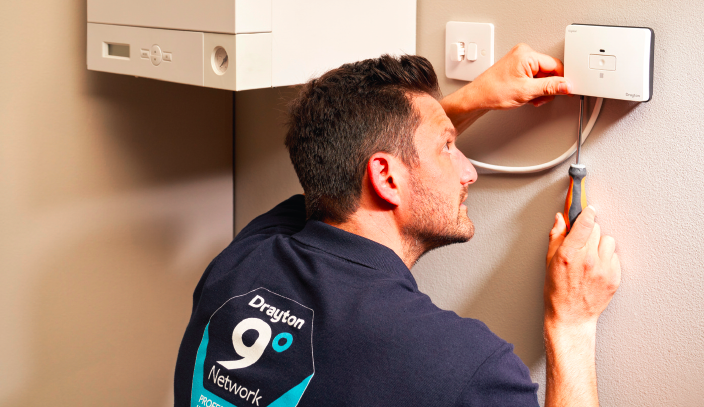
With all regions of the UK expected to have seen household living expenses rise between 18% and 19% in 2024, compared to 2022, it is evident that the cost-of-living crisis is continuing to have a significant impact on many homeowners.
Considering this, Jeremy Palmer, General Manager at Drayton, discusses why it is essential that homeowners have access to fit-for-purpose heating controls that can help them to become more energy efficient, which in turn can help to save them money.
Many people across the UK are feeling the impact of the ongoing cost-of-living crisis and have been for some time, and those in new builds may be feeling the pinch given the expense involved in homeownership. Thankfully, now more than ever, technological advancements in the heating controls space are offering people the opportunity to manage their home’s energy more efficiently, which helps not only to reduce costs but also to limit energy consumption as the drive to protect the planet increases.
Housebuilders can help their residents see improvements simply by ensuring heating controls are up-to-date. In fact, energy savings of up to 12% can be made just by upgrading a basic Class I heating control to a best practice Class V or Class VI thermostat. So, what controls can benefit those who live in new build developments and what further savings can be made when it comes to energy bills?
What controls are suitable for new builds?
There are lots of smart heating controls available on the market today. Those, such as Drayton’s Wiser, can help to save an additional 6% on top of the 12% saved by upgrading. However, these kinds of controls require a significant investment that may not be realistic for the developer concerned. In addition, the smart heating controls of today can be complex to use for some, especially for those who require ultra-accessible devices. Controls of this nature can be off-putting to some residents, making achieving savings more difficult. Therefore, Bluetooth-enabled smart controls, such as Drayton’s Digistat, offer a great alternative.
Not only does the Digistat offer users the opportunity to control their heating schedules via the Wiser Home app with a smart phone, but its user-friendly design also ensures that the physical thermostat on the wall can be adjusted manually with ease. As well as a large back-lit LED display, the Digistat is designed with recessed buttons and has the option for audible feedback when adjusting the heat settings, which has been recognised by The Research Institute for Disabled Consumers, who have named it a recommended thermostat.
Installing TRVs is another great way to support energy and cost-savings, given that they allow users to control the temperature of each room in the house individually. In fact, BEAMA statistics say that savings of up to 19% can be made when introducing individual room controls. What’s more, auto-balancing TRVs are now available, which ensure that the system’s radiators are permanently balanced and receive the correct flow rate creating more evenly distributed heat across the home. Typically, introducing auto-balancing TRVs can save up to 8% in energy usage in the average home.
How can Bluetooth-enabled controls help to reduce energy bills?
As mentioned, homeowners can use Bluetooth-enabled devices to build their personalised heating schedule via an app, such as Wiser Home app for Digistat which means they can easily ensure the heating is only switched on when required, and to the desired temperature. Although arguably easier to navigate than connected smart controls, available alternatives like Drayton’s Digistat also offer similar energy-savings modes that are typically associated with connected options. For example, Away Mode and Delayed Start, which can provide reductions of 14% and 10% respectively. Away Mode works by allowing the user to set their heating to turn off for a set period of time, whilst they take a trip away, for example. While Delayed Start works automatically by delaying start times, intuitively adapting the pre-set schedule and optimising energy use by learning the thermal characteristics of the home and taking into account external temperatures.
In addition, the Digistat features load compensation which saves 10% of energy use compared to traditional ON/OFF thermostats. Alternatively, enabling OpenTherm modulation enhances the performance of heating systems, generating a 12% reduction in energy use. The cost-of-living crisis is still very much a reality for those living in new builds and while incorporating modern heating controls cannot single-handily solve this issue, there is evidence to suggest that solutions like Drayton’s Digistat and range of TRVs are able to help reduce the cost of household energy bills by driving down energy consumption. Specifying cutting-edge heating controls can certainly make a property more attractive. Particularly if you can explain the advantages and cost saving benefits that the right technology will provide.









